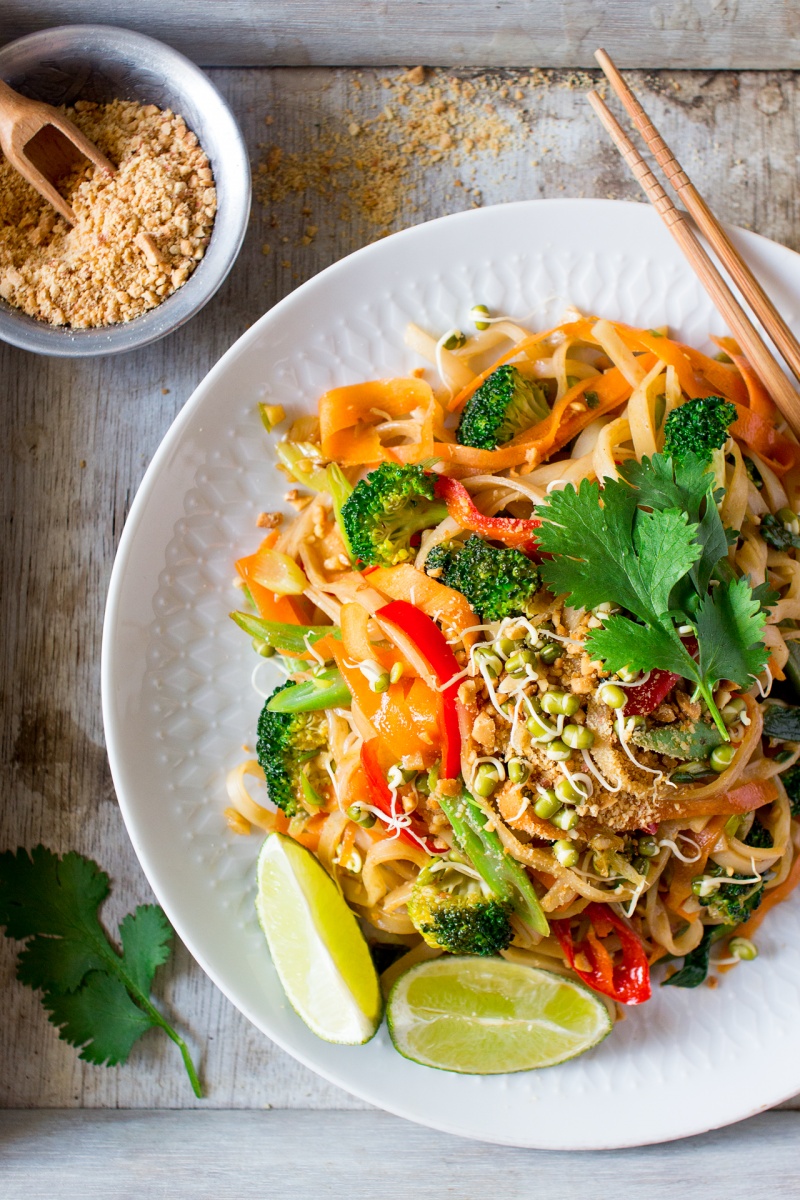
Pad Thai (or Phad Thai) has been one of my favourite dishes for a while now. Apparently, it’s also one of the most popular Thai dishes outside Thailand so I’m hoping this simple recipe will be a welcome addition to the blog.
Pad Thai is one of these dishes that is not that difficult to veganise. I used a colourful array of crunchy veg in my version, but golden-fried tofu cubes would be great addition too. The only reason I did not include tofu is that I simply ran out.
The most tricky thing to replace is the fish sauce. This ubiquitous Thai condiment gives this and other Thai dishes their rounded flavour. If there is a will there is a way though. You can either buy a non fish-based fish sauce or simply prepare your own by infusing soy sauce (or tamari) with a bit of seaweed and dried mushrooms.
If it sounds like too much effort and you’re only after a quick lunch, just use a straight soy sauce instead…You’ll still be licking your lips after, promise!
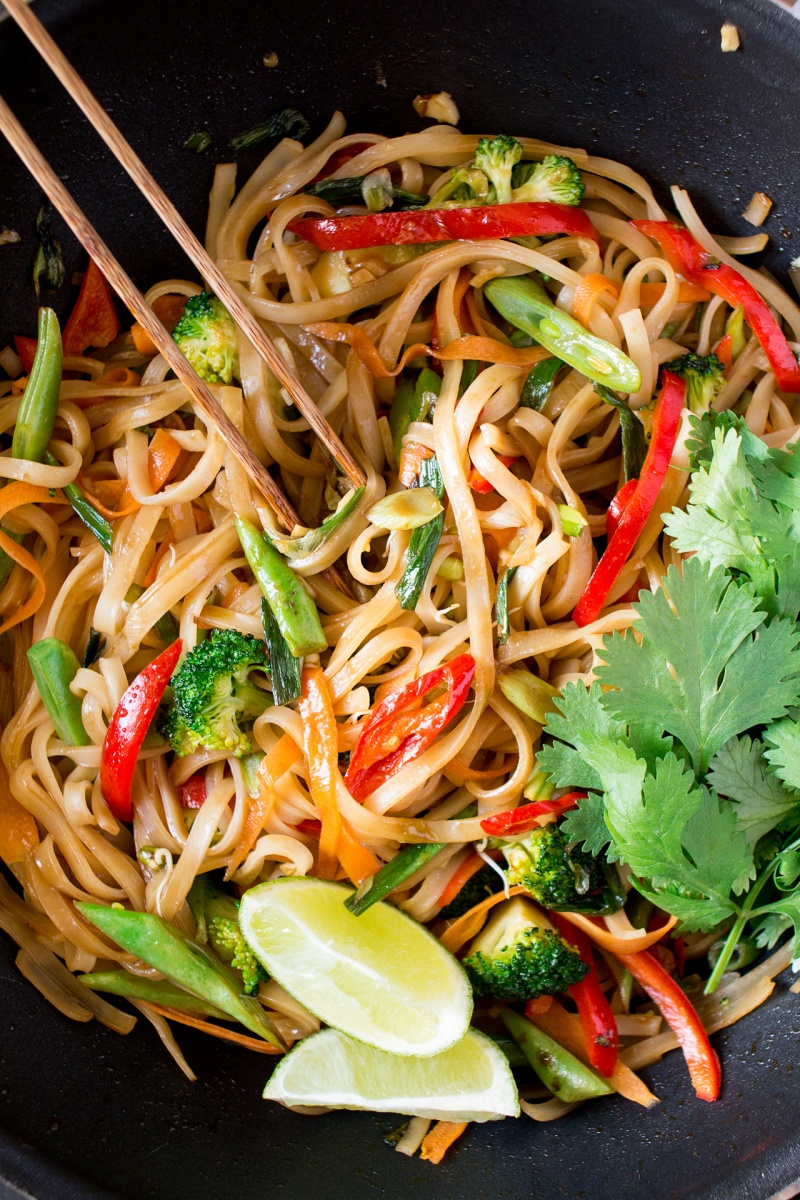
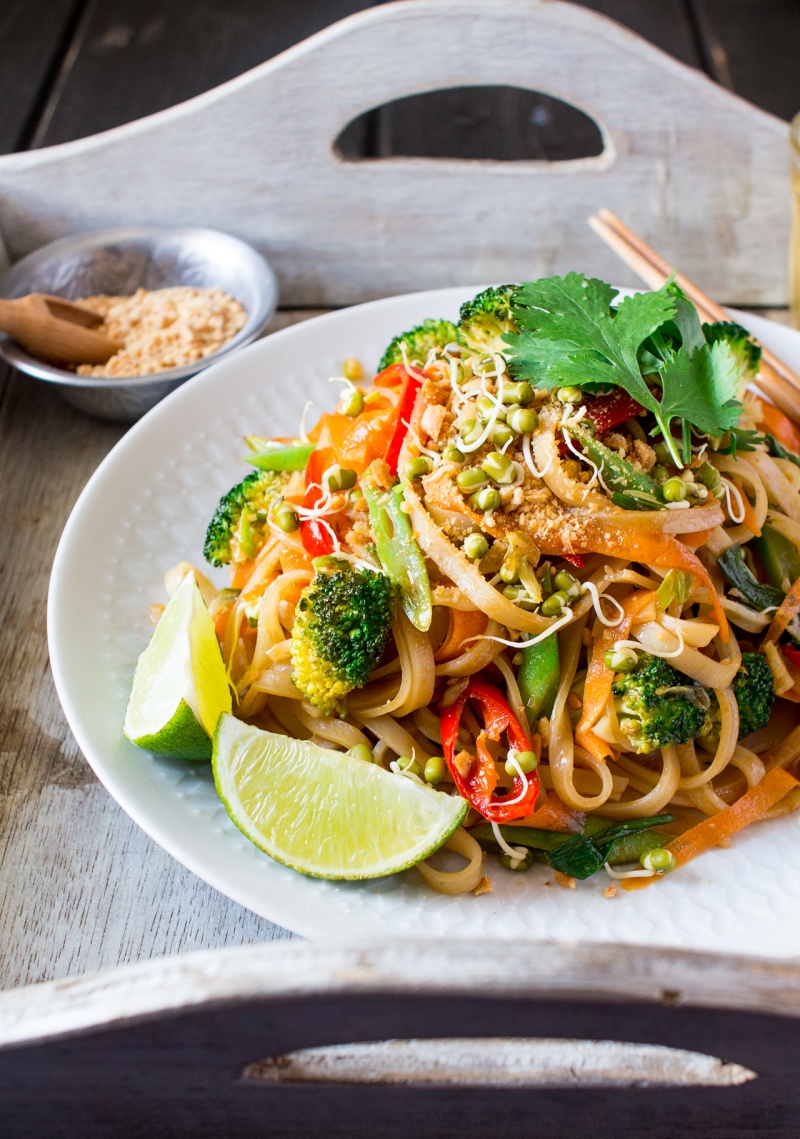
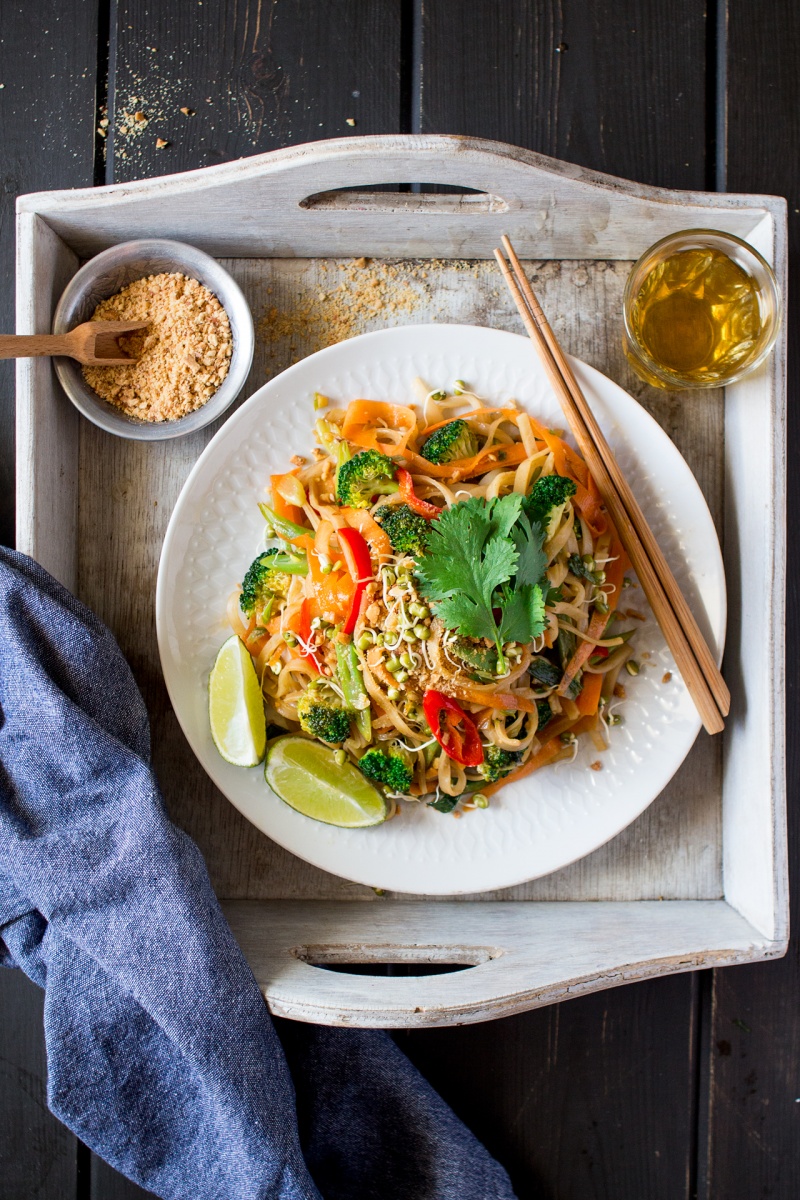
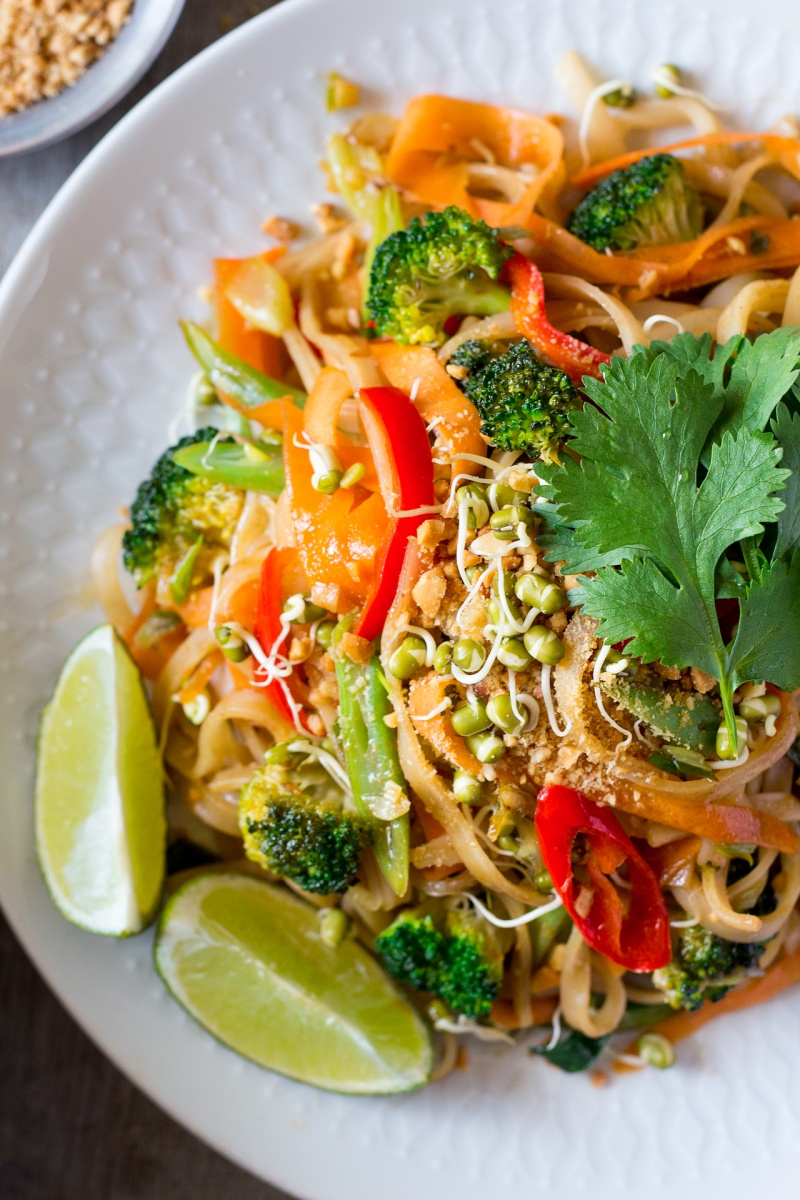
PHAD THAI
- 200 g / 7 oz wide rice noodles
- 2 tbsp peanut oil (or other high smoke point oil)
- 2 spring onions, sliced
- 2 garlic cloves, finely sliced
- 1 hot red chilli, finely sliced
- 2 carrots, shaved into ribbons with a speed peeler
- a large handful of green beans, cut diagonally
- ½ small broccoli, divided into florets
- 1 red pepper, finely sliced
- ¼ cup roasted & unsalted peanuts, pounded in a pestle & mortar
- ½ cup mung bean sprouts
- fresh coriander, to garnish
SAUCE
- 5 tbsp tamarind sauce*
- 1 tbsp tamari / soy sauce
- 2 tbsp vegan fish sauce* or more tamari / soy sauce
- 2-3 tbsp maple syrup, adjust to taste
- Prepare rice noodles according to the instructions on the packet, but do not cook them fully as you’ll give them another minute or two in the wok after. After you immerse them in soaking water, lift the lid and give the noodles a good stir to prevent them from clumping together and sticking to the bottom of the pot. Give them another good stir half way through the soaking time.
- Once the time is up, drain the noodles and set aside. You may want to stir a little bit of oil through them to prevent them from sticking together but I do not find this necessary.
- Mix all the sauce ingredients together in a small bowl. If you are using a shop-bought tamarind puree / paste, go easy on it at first as it is apparently more concentrated (and therefore more sour) than if you make your paste from a tamarind block (see notes) yourself.
- Heat up a wok or a large frying pan. Pour 1 tbsp of oil and heat it up until almost smoking. Add spring onions, garlic and chilli.
- Stir-fry (stirring constantly) until spring onions soften and garlic becomes fragrant. Transfer to a separate plate, leaving as much oil in the wok as you can.
- Heat up another tablespoon of oil in the same wok – no need to wash it. Start adding prepared veggies in the following order (leaving a minute or two between each addition): broccoli, peas, red pepper and carrot ribbons. Stir-fry until cooked yet still crunchy.
- Transfer all vegetables to a big plate and pour the sauce to the bottom of the wok. Add in noodles – they may have clumped together a little, but the sauce and heat of the work will separate them again.
- Add spring onions, chilli, garlic and stir-fried veg back to the wok. Mix everything well and let it warm up, stirring the whole time, for a minute or two.
- Divide between two plates, sprinkle with sprouts and crushed peanuts. Serve with lime wedges on the side.
To make a tamarind sauce, chop 200 g / 7 oz of seedless tamarind block roughly and place in a small bowl. Cover with 500 ml / 2 cup of boiling water and set aside for 20 minutes to allow it to soften. Once softened, place in a blender and blend until smooth. Pass it through the sieve to get rid of any leftover seeds. Store in a sterilised jar for 1-2 weeks (due to a high water content in may get mouldy if stored for much longer).
**I made my fish sauce using a recipe from this amazing vegan cookbook. It’s basically tamari or soy sauce simmered with generous amount of seaweed, garlic, black peppercorns and a dried shiitake mushroom. You could also use this recipe.

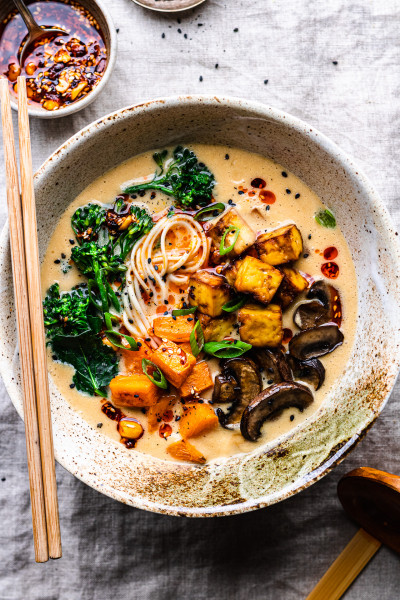

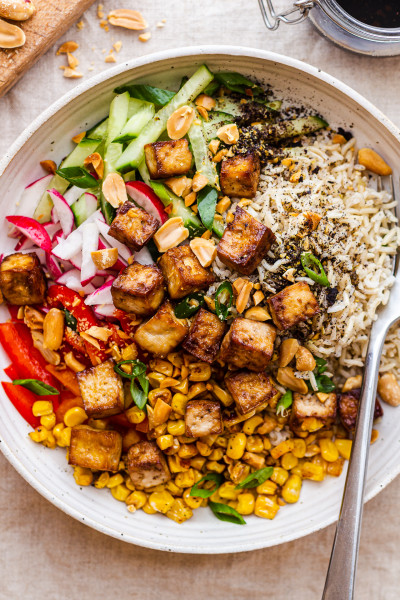
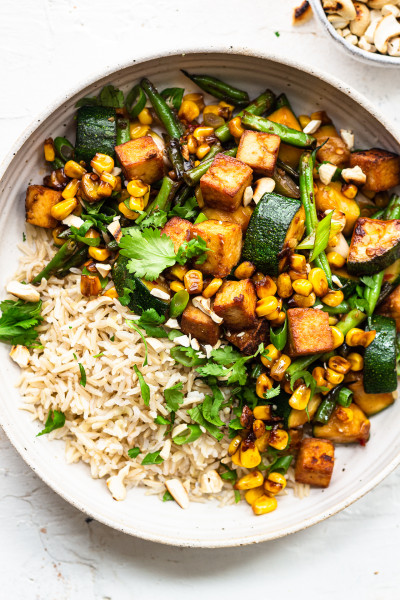
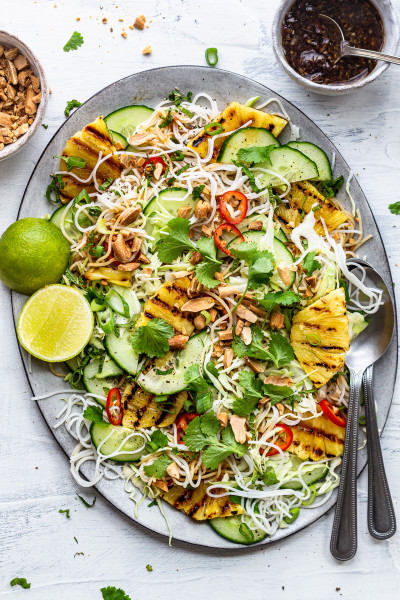
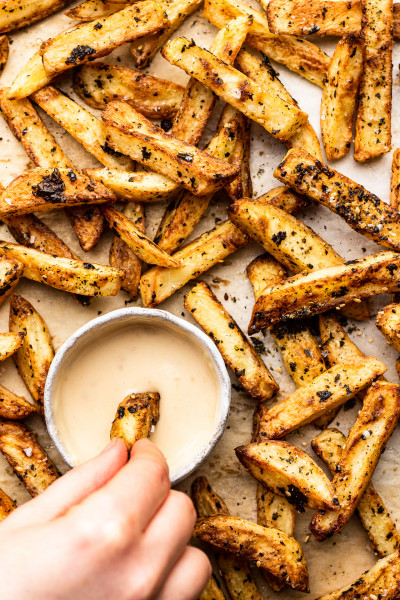
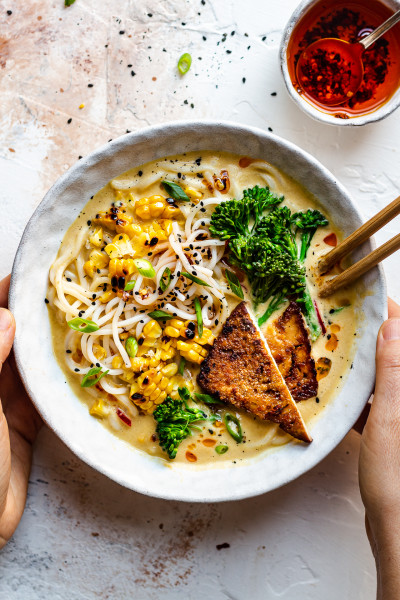
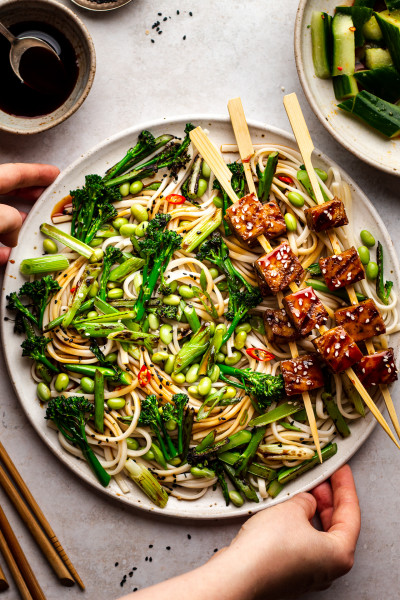

Some ingreidents changes:
- I had no vegan fish sauce so I just subbed for more tamari.
-- I added baked tempeh to it just because i'm in love with tempeh (and I had no mung beans.)
It was divine!
Just wondering when making the Tamarind sauce - does the tamarind block + soaking water go in the blender?
Thanks!
Yes, but I would chop it up small and soak it in boiling water first to soften. Once blended smooth, I recommend putting through a sieve (it's a bit of a faff) as even seedless tamarind blocks tend to have bits of seeds in them and you can easily break a tooth on those. Hope that helps! Ania
I am unable to provide them on my website, I'm afraid. Ania
Thanks so much!!!
Thank you so much for this recipe it was super tasty.
I love Thai style foods but didn’t know how to make them.
Thank you again.
From
Jamie
I used Tamarind Concentrate (2 tbs) and 1 extra tbs of syrup. This was so easy and quick. That's super important. I will be making again!
Thanks!
You could either bake it or pan-fry it (sprinkled with a bit of cornstarch) separately. Or you could stir-fry it alongside the veggies. I hope that helps! Ania
Thank you so much for the recipe!
Notes for next time (and in case useful for others):
- I used various different veggies (including a whole onion at the beginning, plus courgette and mushrooms later).
- In the sauce mix I added 2 TBS peanut butter, a decent squirt of sriracha, and extra water as it was very thick.
- I found my rice noodles were ready within 4 mins, not the 8 it said on the pack, so was glad I noticed that and could rescue them in time :)
- Added firm tofu when cooking the onion+chilli+garlic with a splash of tamari.
1. I will fry the garlic in a separate pan, as the garlic makes the bottom sticky
2. I will try and remove the pits from the tamarind paste before I put it through the blender. I wasn't sure whether to blend in the water with the paste, but since it is called a sauce nat a paste, I believe the water had to go in the blender as well. I wasn't too sure how to put the sauce through a sieve (mine was probably much too fine), so I fished out the pits with my fingers.
I had been looking for a good pad thai recipe for a while, and this is totally satisfying. No need to look any further: this is it. Thank you.
Yes, I think that grated ginger will go fine with it if you like the flavour. Just be sure to go easy on tamarind paste if you are making your own from a block of dried tamarind as it will be more intense in flavour than the ready-made puree than I used. Hope you'll like it!
Dziękuję Ci bardzo za tak miłe słowa! Bardzo się cieszę, że podobają Ci się moje przepisy. Takie komentarze zdecydowanie wynagradzają mi wysiłek jaki w nie wkładam :) Książka, kto wie...może za jakiś czas! Tak, piszę też po polsku a przynajmniej się staram :) Jeszcze raz dzięki i pozdrowienia ze słonecznego Paros!
X
Thank-you!
If you are new to plant-based eating, you'll be surprised and pleased to know that protein is in almost everything :) and, contrary to this common myth (see this article), it is just as valuable as animal-derived one. In this particular meal, both broccoli (2.8 g per 100 g raw) and peanuts (26 g in 100 g) pack a lot of it so, yes, I would say it is a well-balanced meal.
Cheers,
Anna